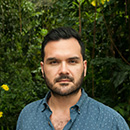
The climate crisis is leading to greater interest from countries and companies in forest-based solutions, such as the framework for Reducing Emissions from Deforestation and Forest Degradation (REDD+). However, there are concerns about the risks that new investments pose to forest-dependent communities, such as Indigenous Peoples and local communities (IPs and LCs).
The need to clarify and understand the role of REDD+ safeguard standards has therefore gained new urgency. Adopted at the Conference of the Parties to the United Nations Framework Convention on Climate Change (UNFCCC) in Cancun in 2010, the safeguards were defined as “a set of principles, rules and procedures put in place to achieve social and environmental goals”. They have been conceptualized and articulated in ways ranging from bulwarks against the most harmful impacts of REDD+ (referred to as the ‘do no harm’ objective) to mechanisms to catalyse improved well-being and livelihoods for IPs and LCs and their territories (the ‘do better’ objective).
Yet, as Parties to the UNFCCC are free to ‘interpret’ these principles within their legal frameworks and public policies, organizations representing IPs and LCs and their partners have criticized the approach for failing to advocate for reforms that recognize and protect the recognition and exercise of the rights of IPs and LCs in contexts where there are barriers to the recognition and respect for their rights.
Given that IPs and LCs manage territories storing almost 300,000 million metric tons of carbon, their rights, interests and well-being cannot be ignored by any truly transformative climate solution.
As part of the Global Comparative Study on REDD+, we reviewed documents published by 11 REDD+ standards and guidelines and other forest-based climate initiatives to determine their levels of support for respecting, recognizing, protecting and fulfilling the rights of IPs and LCs. The preliminary results of the review were recently published in English, Indonesian and Spanish.
The contribution
Our findings are summarized in a table in which we compare nine criteria for understanding the commitment of standards and guidelines to the rights of the IPs and LCs that steward forests where REDD+ is implemented.
The table presents a snapshot of safeguards standards and guidelines. The snapshot sets a baseline for understanding – at a glance – what safeguards aim to do, what they do not, which ones are more rigorous, and what might be possible in terms of their support for the rights of IPs and LCs. In each case, we indicate the level (e.g., national, subnational) of application and the historically underrepresented groups to which it applies.
Based on a review of documents published by each standard or institution, we determined the extent to which each guideline aligned with nine criteria relating to the respect for, and the recognition, protection, and fulfilment of, the rights of IPs and LCs: (1) alignment with Cancun safeguards; (2) recognition of gender and/or women’s concerns; (3) recognition of the rights of IPs and LCs under international law; (4) recognition of land and natural resource rights for IPs and LCs; (5) recognition of community carbon rights; (6) recognition of the right of IPs and LCs to free, prior, and informed consent; (7) requirement for formal benefit-sharing mechanisms; (8) requirement for formal grievance mechanisms; and (9) provisions for monitoring, reporting, and verification for rights and social inclusion concerns.
Safeguard guidelines were rated as fully aligning with the criterion (yes), aligning in a limited way – for those that only met some aspects of the criterion (partial) or not aligned (no).
Findings
We found considerable variation in how safeguard standards and guidelines engage with the rights of IPs and LCs. For instance, many are focused on the project level, and most align with the Cancun safeguards. Gender and/or women’s inclusion are addressed in some way in all but one standard.
Almost all apply to IPs and LCs (although there are different definitions across standards), but two do not mention Indigenous Peoples specifically. Just over half specifically recognize the rights of Indigenous Peoples under international law, and some extend those recognized rights to local communities. Only four broadly recognize the rights of IPs and LCs to land and resources; none recognize community carbon rights. Only five have strong protocols for free, prior, and informed consent, only four require attention to benefit-sharing mechanisms, and all but one required formal grievance mechanisms.
In addition, we noted that although most of the guidelines of multilateral funding institutions require robust monitoring, reporting, and verification, only two of the voluntary standards do so. More ambitious standards and guidelines tie results-based payments to evidence of ‘doing better’, rather than the much lesser bar of ‘doing no harm’.
From beneficiaries to partners
How then can voluntary REDD+ standards support a rights-based transformation and re-engage with the women and men of IPs and LCs as rights-holders and partners rather than project beneficiaries?
With this series, we hope to provide lessons for standards proponents to compare their safeguard provisions and present evidence for decision makers and practitioners to consider the implications and benefits of supporting the rights of IPs and LCs. The series also seeks to encourage the participation of IP and LC representatives in discussions on and monitoring of safeguards.
CIFOR-ICRAF and GCS REDD+ partners will continue to delve into these issues by analysing safeguard standards and their implementation, complemented by fieldwork in Indonesia, Peru, and the Democratic Republic of the Congo in 2022–2023.
This work, carried out as part of the Center for International Forestry Research’s Global Comparative Study on REDD+ (www.cifor.org/gcs), builds on a prior study by the Rights and Resources Initiative (Lofts, Frechette and Kumar 2021). The funding partners that have supported this research include the Norwegian Agency for Development Cooperation (Norad, Grant No. QZA21/0124), the International Climate Initiative (IKI) of the German Federal Ministry for the Environment, Nature Conservation, and Nuclear Safety (BMU, Grant No. 20_III_108), and the CGIAR Research Programme on Forests, Trees and Agroforestry (CRP-FTA) with financial support from CGIAR Fund Donors.
We want you to share Forests News content, which is licensed under Creative Commons Attribution-NonCommercial-ShareAlike 4.0 International (CC BY-NC-SA 4.0). This means you are free to redistribute our material for non-commercial purposes. All we ask is that you give Forests News appropriate credit and link to the original Forests News content, indicate if changes were made, and distribute your contributions under the same Creative Commons license. You must notify Forests News if you repost, reprint or reuse our materials by contacting forestsnews@cifor-icraf.org.













